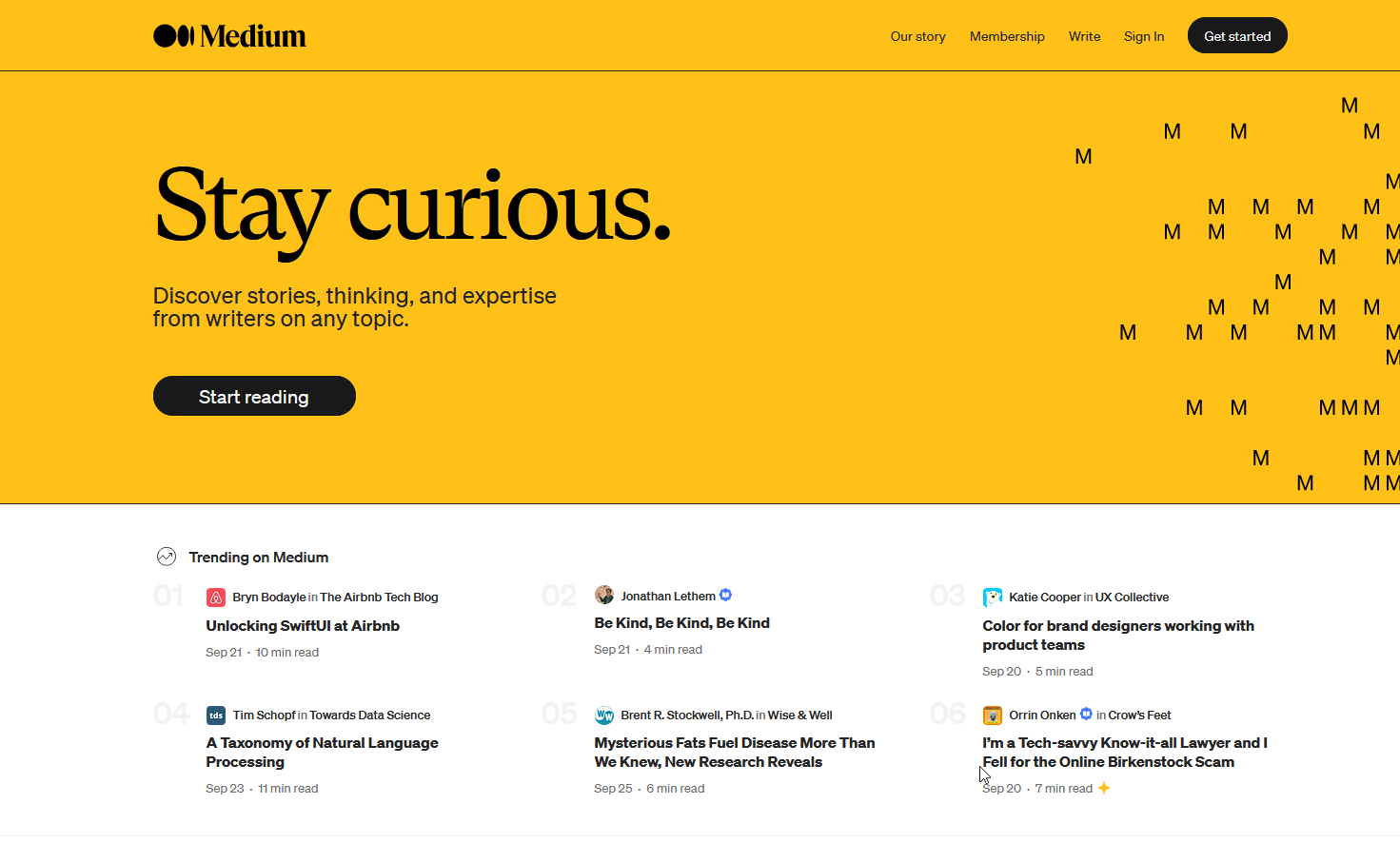What Recruiters Look for in a Content Writer’s Portfolio

The Art of Finding High-Converting Keywords for Your Website
July 11, 2023For content writers looking to stand out from the crowd, having a well-crafted portfolio is key. A portfolio is a great way to showcase your best work and demonstrate your skillset to potential employers or clients. Knowing what recruiters look for in a content writer’s portfolio can help you put together an impressive portfolio that will attract the right opportunities.
In this blog post, we’ll discuss the essential components that should be included in a content writer’s portfolio to ensure you make a positive impression.
The Purpose of a Content Writer’s Portfolio
A content writer’s portfolio serves an important purpose in their career. It is not just a collection of their work, but a strategic tool to showcase their skills, experience, and potential to potential employers or clients. The purpose of a content writer’s portfolio is to provide evidence of their capabilities, demonstrate their expertise, and make a positive impression on recruiters. It is a way for content writers to differentiate themselves from the competition and stand out in a crowded marketplace.
By having a well-crafted portfolio, content writers can show recruiters their writing style, versatility, and ability to produce high-quality content. It allows them to highlight their range of skills and expertise, as well as provide concrete examples of their success in tackling specific challenges and achieving results for clients. A content writer’s portfolio also serves as social proof, with testimonials and reviews from satisfied clients adding credibility to their work.
Overall, the purpose of a content writer’s portfolio is to present a compelling case for why they are the right choice for a job or project. It is an opportunity for them to showcase their professionalism, reliability, and value as a content writer. By carefully curating and presenting their portfolio, content writers can make a lasting impression and increase their chances of securing the right opportunities.
What to Include in Your Portfolio
Creating a compelling content writer’s portfolio requires careful consideration of what to include. The goal is to showcase your skills and abilities, as well as provide evidence of your success and credibility. So, what should you include in your portfolio to make it stand out?
First and foremost, include a variety of samples of your published work. This allows potential clients or employers to see your writing style and versatility across different formats and topics. Choose your best work and make sure it represents your range and expertise.
Next, consider including case studies and projects that demonstrate your ability to tackle specific challenges and deliver results. This shows your problem-solving skills and your ability to meet client objectives. Include details about the challenges you faced, the strategies you employed, and the outcomes achieved.
Testimonials and reviews are another important component to include in your portfolio. These serve as social proof and can greatly enhance your credibility. Include feedback from satisfied clients that highlights your professionalism, reliability, and the value you brought to their projects.
Certifications and awards are another way to bolster your portfolio. Include any relevant certifications or industry recognition you have received. This shows that you are committed to continuous learning and development and can add an extra level of credibility to your portfolio.
Finally, don’t forget to include your contact information and a brief bio. You would be surprised by how often people can miss the simplest of details like contact info in their portfolio. Make it easy for potential clients or employers to get in touch with you and provide a brief overview of your background, experience, and areas of expertise. If your just begging your content writing career, sites like Freelance Writers Den can help you get started and boost your portfolio with professional content.
In summary, your content writer’s portfolio should include samples of your published work, case studies and projects, testimonials and reviews, certifications and awards, as well as your contact information and bio. By including these essential components, you can create a portfolio that grabs the attention of recruiters and sets you apart from the competition.
Samples of Published Work
When it comes to showcasing your skills as a content writer, nothing speaks louder than your published work. Including a variety of samples of your published work in your portfolio allows potential clients or employers to see your writing style and versatility across different formats and topics. It gives them a clear understanding of your abilities and helps them envision how your skills can meet their specific needs.
For example, let’s say you specialize in creating engaging blog posts for lifestyle brands. In your portfolio, you could include a sample blog post where you successfully captured the brand’s voice and created compelling content that resonated with the target audience. This would demonstrate your ability to write in a specific tone and style, as well as showcase your creativity and understanding of the brand’s values.
In addition to including published articles, consider including samples from other mediums, such as social media posts, website copy, or email newsletters. This shows your versatility as a writer and your ability to adapt your writing to different platforms and purposes. To get started, consider platforms like Medium or Contently where you can publish your work and create an online portfolio.
Remember, quality over quantity is key. Better to have 10 great writing samples than 30 mediocre ones. Choose your best work that represents your range and expertise. By including a variety of samples that showcase your skills and capabilities, you can make a strong impression on potential clients or employers and increase your chances of landing your dream opportunities.
Remember, quality over quantity is key. Better to have 10 great writing samples than 30 mediocre ones. Choose your best work that represents your range and expertise. By including a variety of samples that showcase your skills and capabilities, you can make a strong impression on potential clients or employers and increase your chances of landing your dream opportunities.
Case Studies and Projects
Case studies and projects are a vital component of a content writer’s portfolio. These examples allow you to showcase your problem-solving skills, your ability to meet client objectives, and the results you have achieved in your writing projects. Including case studies and projects in your portfolio demonstrates your expertise and provides concrete evidence of your capabilities.
When selecting case studies and projects to include, choose those that highlight your ability to overcome challenges and deliver exceptional results. Explain the specific challenges you faced, the strategies you employed, and the outcomes you achieved for your clients. By providing this level of detail, you can demonstrate your ability to handle complex projects and deliver successful outcomes.
Case studies and projects should showcase a variety of writing styles and formats to highlight your versatility. Include examples that span different industries, niches, or target audiences to show your adaptability as a writer. This will give potential clients or employers confidence in your ability to create content that resonates with diverse audiences.
Remember to include relevant details for each case study or project, such as the client or company you worked with, the goals and objectives of the project, and any measurable results or impact your writing had. Providing concrete evidence of your success will bolster your credibility and attract potential clients or employers.
In summary, case studies and projects are a crucial component of a content writer’s portfolio. They showcase your problem-solving skills, demonstrate your ability to meet client objectives, and provide evidence of your success as a writer. By selecting diverse examples and providing relevant details, you can impress potential clients or employers and increase your chances of landing your dream opportunities.
Testimonials and Reviews
Testimonials and reviews are another essential component of a content writer’s portfolio. They provide social proof and help to establish your credibility and reliability as a writer. Potential clients or employers want to see evidence of your ability to deliver high-quality content and satisfy the needs of previous clients.
Including testimonials from satisfied clients in your portfolio allows others to see the positive experiences that others have had when working with you. It gives them confidence in your skills and expertise, knowing that you have successfully met the expectations of previous clients.
In addition to testimonials, reviews from clients or industry experts can also be included in your portfolio. These reviews can further enhance your reputation and highlight your strengths as a content writer. They can validate your skills, professionalism, and ability to meet deadlines.
When including testimonials and reviews in your portfolio, it’s important to select ones that showcase a range of positive feedback. Include those that highlight different aspects of your writing, such as your ability to capture the brand’s voice, your attention to detail, and your ability to meet project goals.
Overall, testimonials and reviews are powerful tools in your content writer’s portfolio. They help to establish your credibility, build trust, and provide evidence of your past successes. Including them in your portfolio can greatly increase your chances of attracting new clients and opportunities in the future.
Certifications and Awards
Certifications and awards can add an extra level of credibility and expertise to your content writer’s portfolio. These accomplishments show potential clients or employers that you are committed to continuous learning and development, and that you have been recognized for your skills and knowledge in the industry.
Including any relevant certifications you have obtained can demonstrate your commitment to staying up-to-date with the latest industry trends and best practices. For example, if you have a certification in content marketing or SEO, it shows that you have a deep understanding of these areas and can provide valuable insights and strategies to clients.
Awards can also be a great addition to your portfolio. They validate your writing skills and expertise and provide recognition for your outstanding work. Whether it’s a writing competition you won or an industry award you received, these accolades can help you stand out from the competition and catch the attention of potential clients or employers.
Overall, including certifications and awards in your content writer’s portfolio can provide an extra layer of credibility and expertise. It demonstrates your commitment to continuous learning and showcases your outstanding work. These accomplishments can set you apart from the competition and increase your chances of securing new opportunities.
Use testimonials and reviews strategically in your portfolio to build credibility; select feedback that showcases different aspects of your writing, such as your attention to detail and ability to meet project goals.
Contact Information and Bio
Your contact information and bio are the final pieces of the puzzle in your content writer’s portfolio. While they may seem like minor details, they are actually crucial in helping potential clients or employers get in touch with you and understand your background and expertise.
Start by including your full name, email address, and phone number. Make it easy for recruiters to contact you by providing multiple ways for them to reach out. Additionally, consider including links to your professional social media profiles, such as LinkedIn or Twitter, as this can give recruiters a more comprehensive view of your professional network and online presence.
Next, craft a brief bio that highlights your background, experience, and areas of expertise. Keep it concise but impactful, focusing on the key aspects that make you stand out as a content writer. Highlight any relevant educational qualifications, years of experience, or notable clients or publications you have worked with. Don’t forget to mention your writing specialties or niches to give potential clients or employers a sense of your expertise.
In your bio, it can also be beneficial to include a personal touch. This can be a sentence or two that showcases your personality or passion for writing. Whether it’s your love for storytelling or your commitment to creating compelling content, adding a personal touch can make your bio more memorable and help you connect with potential clients or employers on a deeper level.
Your contact information and bio are the final touch that completes your content writer’s portfolio. By providing clear contact details and a compelling bio, you make it easy for recruiters to get in touch and understand what makes you a standout content writer.





